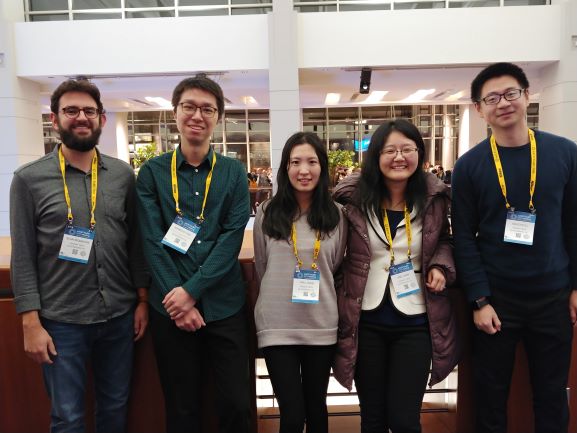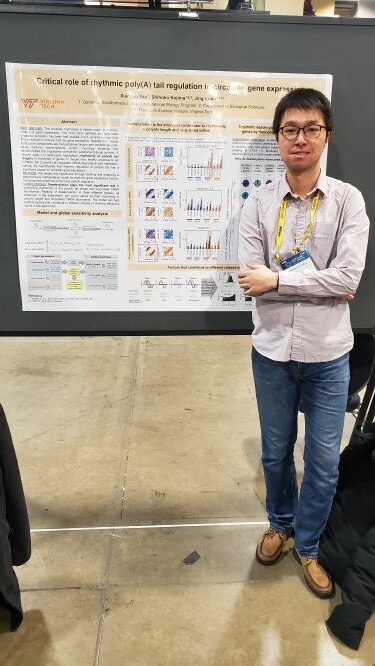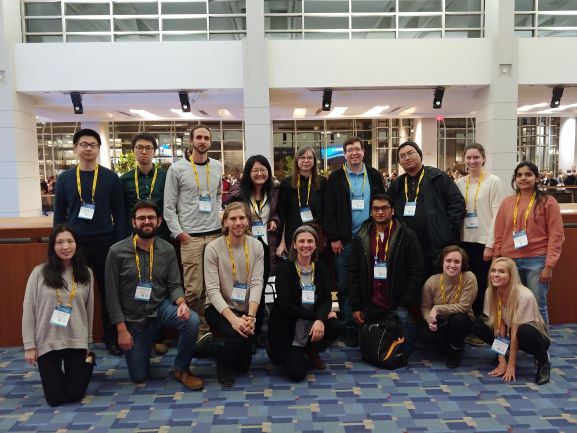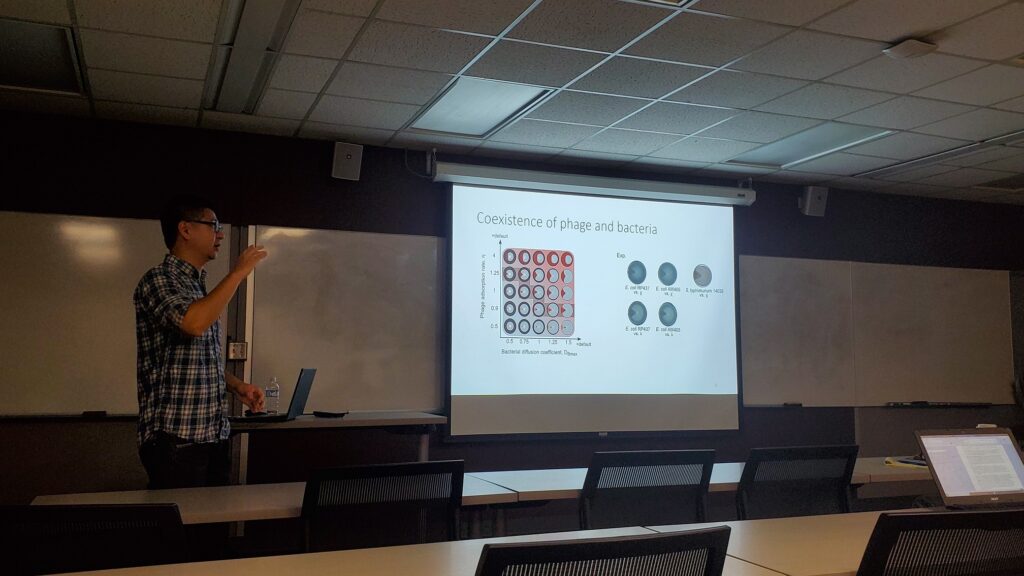
Congratulations on Ossam’s graduation!

Cellular Dynamics in Math

Speaker: Xiangyu (Jacky) Yao, GBCB Doctoral Candidate
Advisor: Dr. Jing Chen, Biological Sciences at VT
Title: Critical Role of Deadenylation in Regulating Poly(A) Rhythms and Circadian Gene Expression
Abstract:
The mammalian circadian clock is deeply rooted in rhythmic regulation of gene expression. Rhythmic transcriptional control mediated by the circadian transcription factors is thought to be the main driver of mammalian circadian gene expression. However, mounting evidence has demonstrated the importance of rhythmic post-transcriptional controls, and it remains unclear how the transcriptional and post-transcriptional mechanisms collectively control rhythmic gene expression.
In mouse liver, hundreds of genes were found to exhibit rhythmicity in poly(A) tail length, and the poly(A) rhythms are strongly correlated with the protein expression rhythms. To understand the role of rhythmic poly(A) regulation in circadian gene expression, we constructed a parsimonious model that depicts rhythmic control imposed upon basic mRNA expression and poly(A) regulation processes, including transcription, deadenylation, polyadenylation, and degradation. The model results reveal the rhythmicity in deadenylation as the strongest contributor to the rhythmicity in poly(A) tail length and the rhythmicity in the abundance of the mRNA subpopulation with long poly(A) tails (a rough proxy for mRNA translatability).
In line with this finding, the model further shows that the experimentally observed distinct peak phases in the expression of deadenylases, regardless of other rhythmic controls, can robustly cluster the rhythmic mRNAs by their peak phases in poly(A) tail length and abundance of the long-tailed subpopulation. This provides a potential mechanism to synchronize the phases of target gene expression regulated by the same deadenylases. Our findings highlight the critical role of rhythmic deadenylation in regulating poly(A) rhythms and circadian gene expression.
Yao X, Kojima S and Chen J, Critical role of deadenylation in regulating poly(A) rhythms and circadian gene expression (2020) PLoS Computation Biology, 16(4): e1007842.
Speaker: Sean McMahon, VT
Date and place: Wednesday, April 1, 1:15-2:15 pm
Title: Modeling growth-mediated motility in Clostridium perfringens
Abstract: Many bacteria species are able to expedite colony expansion through motility of the cells. Clostridium perfringens, the primary cause of lethal gas gangrene, exhibit a unique mode of colony expansion. Chains of cells continuously grow outward from the bacterial colony and curve. These bacteria appear to lack a direct motility mechanism in individual cells, and are hypothesized to rely on bacterial growth to push adjacent cells in the strongly connected cell chains. Interestingly, these cell chains tend to curve as they grow. Using a “rigid-rod” model we simulate the growth dynamics of these bacteria chains. Our preliminary results suggest that the cell chain curvature cannot result from growth of the cell chain and its interaction with the substrate. Motivated by the observation that multiple chains growing side-by-side appear to curve more than single chains, we hypothesize that chain curvature may be a result of lateral interactions between cell chains. An expanded version of the rigid-rod model is used to include these lateral interactions and also implements collision dynamics between cells in adjacent chains. Ultimately, we will use these mathematical models to investigate if this expansion mode of C. perfringens could be advantageous for spreading and surviving on different substrates and environments the bacteria may encounter during their opportunistic life cycle.
Li X#, Gonzalez F#, Esteves N, Scharf BE* and Chen J*, Formation of Phage Lysis Patterns and Implications on Co-Propagation of Phages and Motile Host Bacteria. (2020) PLoS Computation Biology, 16(3):e1007236. (# Co-first authors. * Co-corresponding authors)
Speaker: Yirui Chen, GBCB Doctoral Candidate
Advisor: Dr. Jing Chen, Dept. of Biological Sciences at VT
Title: Mathematical Modeling of Gliding Motility and Its Regulation in Myxococcus xanthus
Abstract: Myxococcs xanthus manages “social” behaviors, such as cooperative feeding and fruiting-body formation, through intercellular communication and coordination. A particular intriguing intercellular coordination lies in coordination of motility between cells with physical contacts. Specifically, M. xanthus cells glide on substrate with periodic reversals, and physical contacts with opposite-moving colony mates regulate the reversal frequency.
This contact-dependent motility coordination is known to be necessary for intriguing population patterns, such as rippling waves. Frz proteins, regulators that control the periodic reversals in M. xanthus, exhibit subcellular dynamics that are highly correlated with that of the gliding motility motors and change in response to cell-substrate and cell-cell contacts. To understand how control and coordination of M. xanthus motility works, we developed a mathematical model to capture the coupling between the Frz regulators and the gliding motility machinery in cell reversal control. Using the model, we identified several possible mechanisms through which cell-cell contacts can induce proper responses in cell reversals required for generating the rippling waves. Interestingly, we found that both phase advance and phase delay in the cell reversal upon cell-cell contact were able to generate rippling waves. Our model has proposed a new mechanistic explanation for contact-dependent motility coordination in M. xanthus.
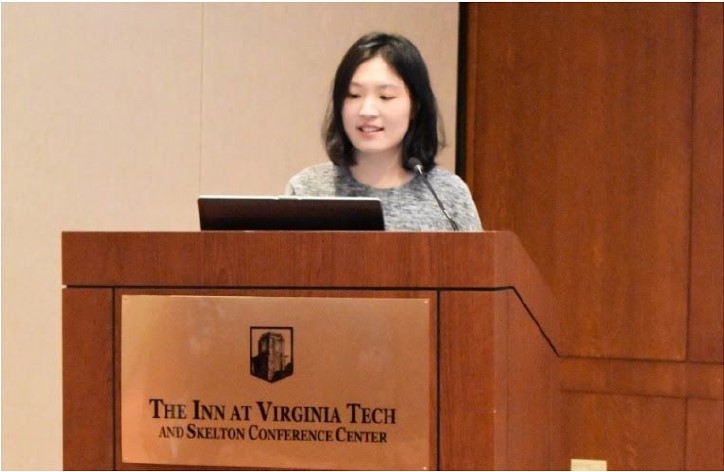

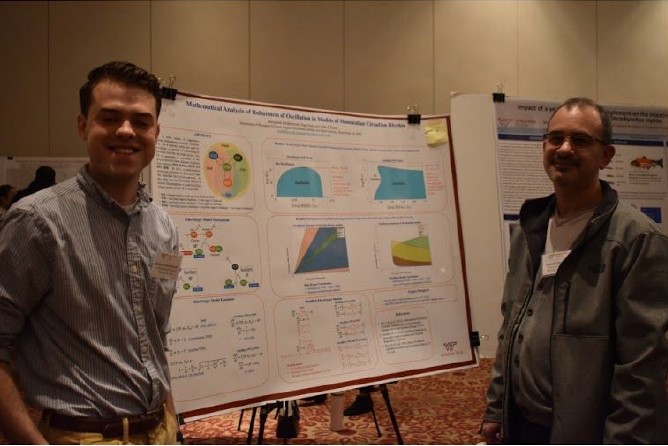
Xiaochu, Sean, Xiangyu, Yirui and Jing attended the 2019 American Society for Cell Biology Annual Meeting at Washington DC on Dec. 7-11.
